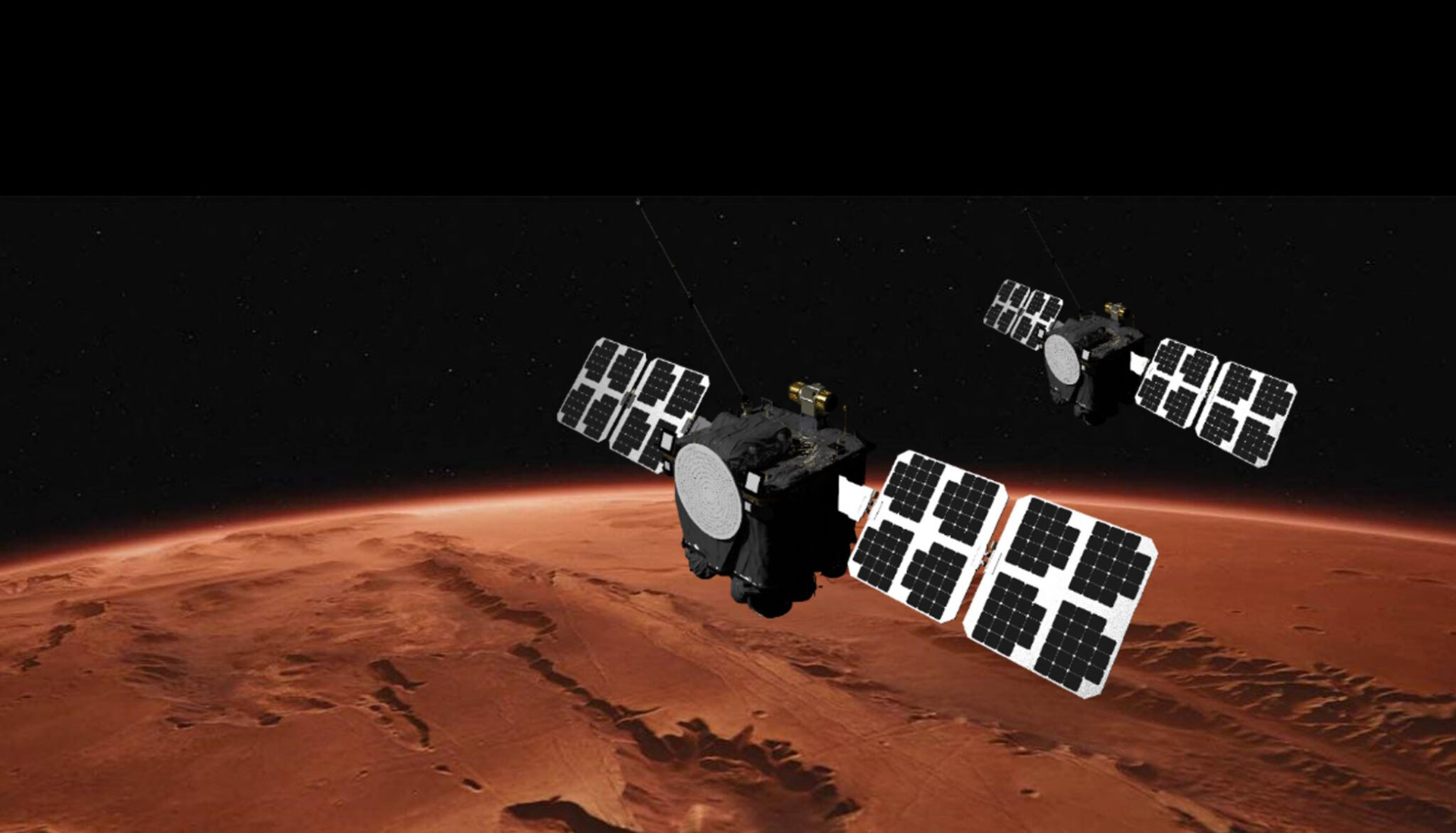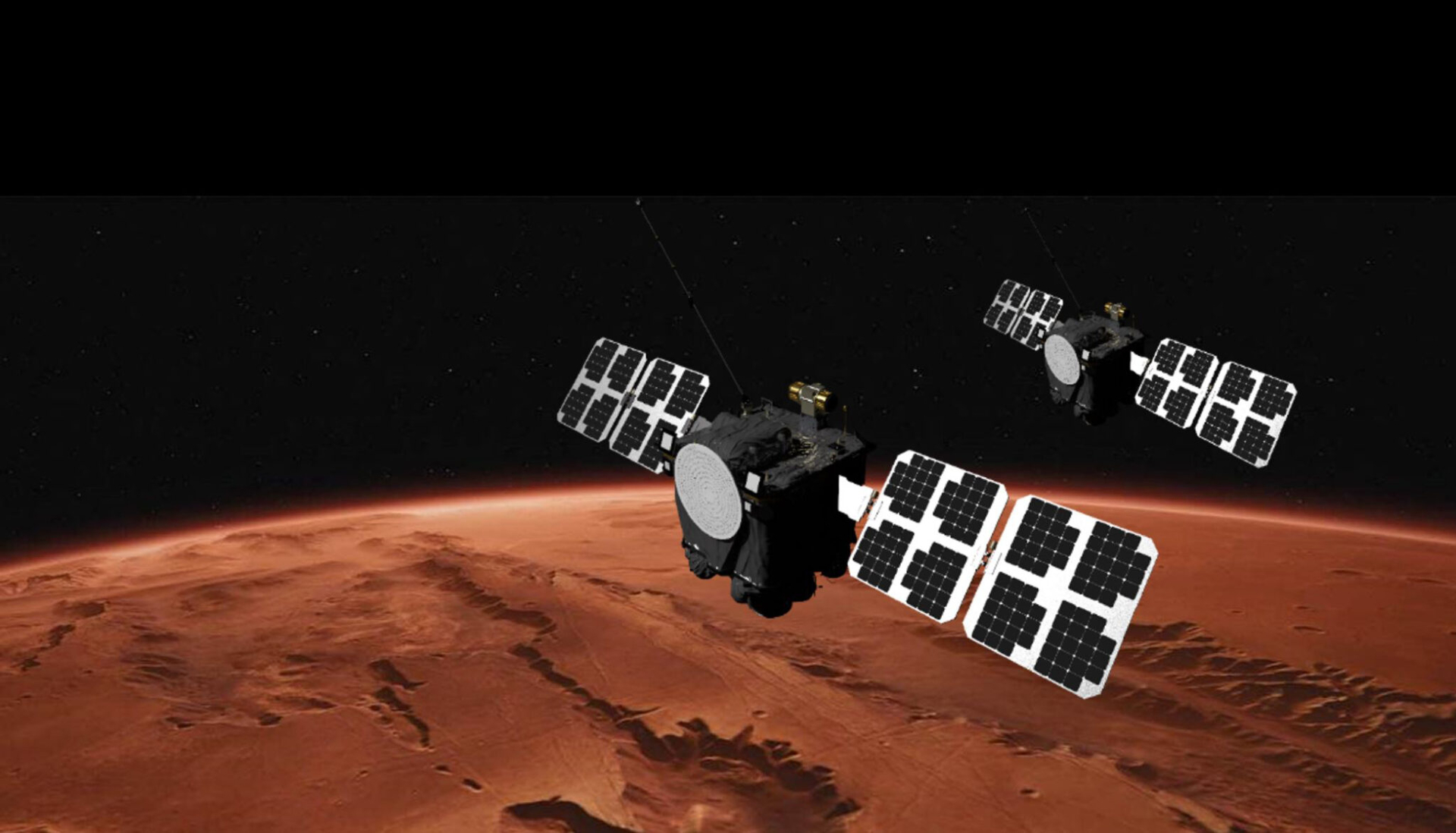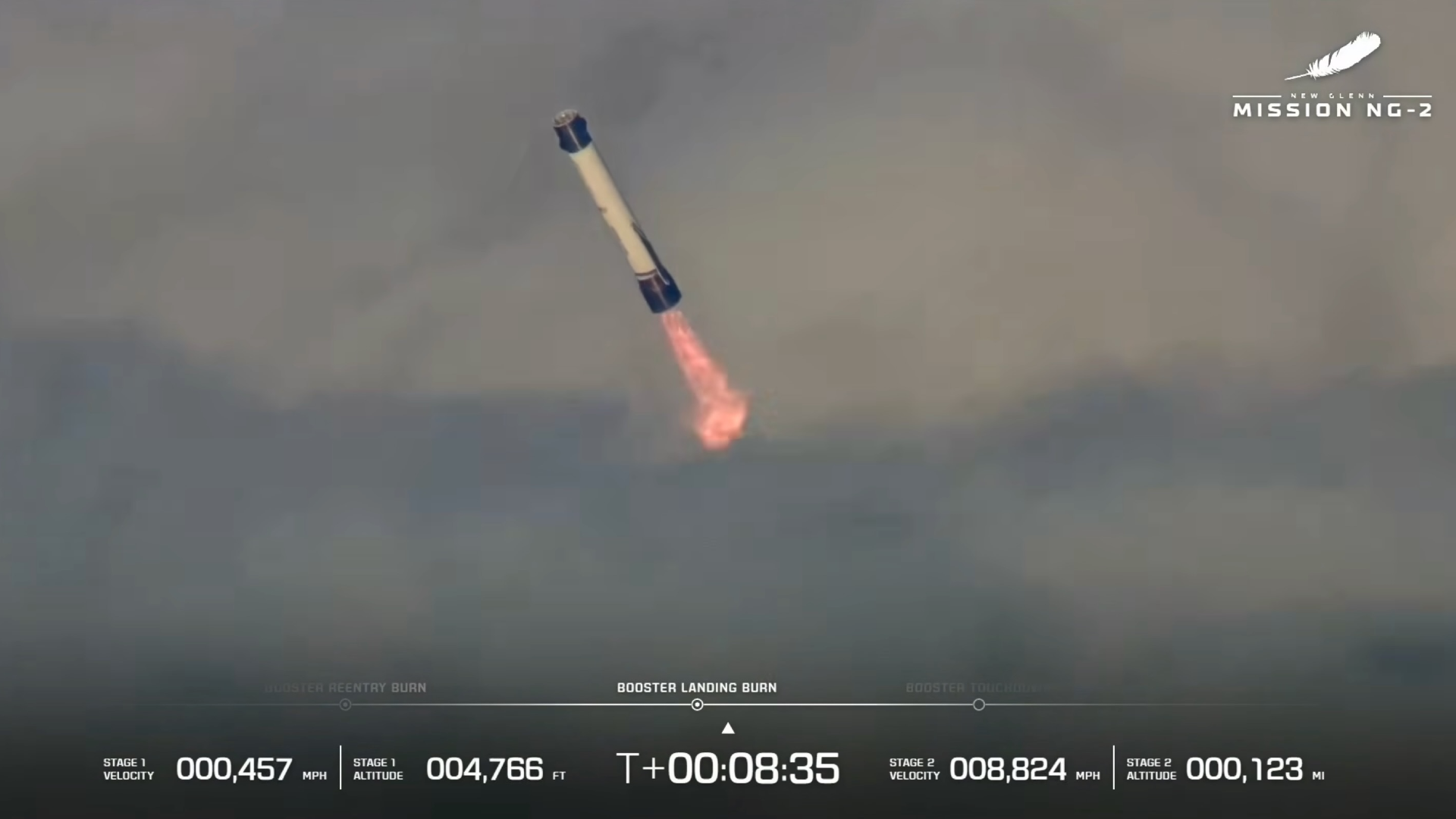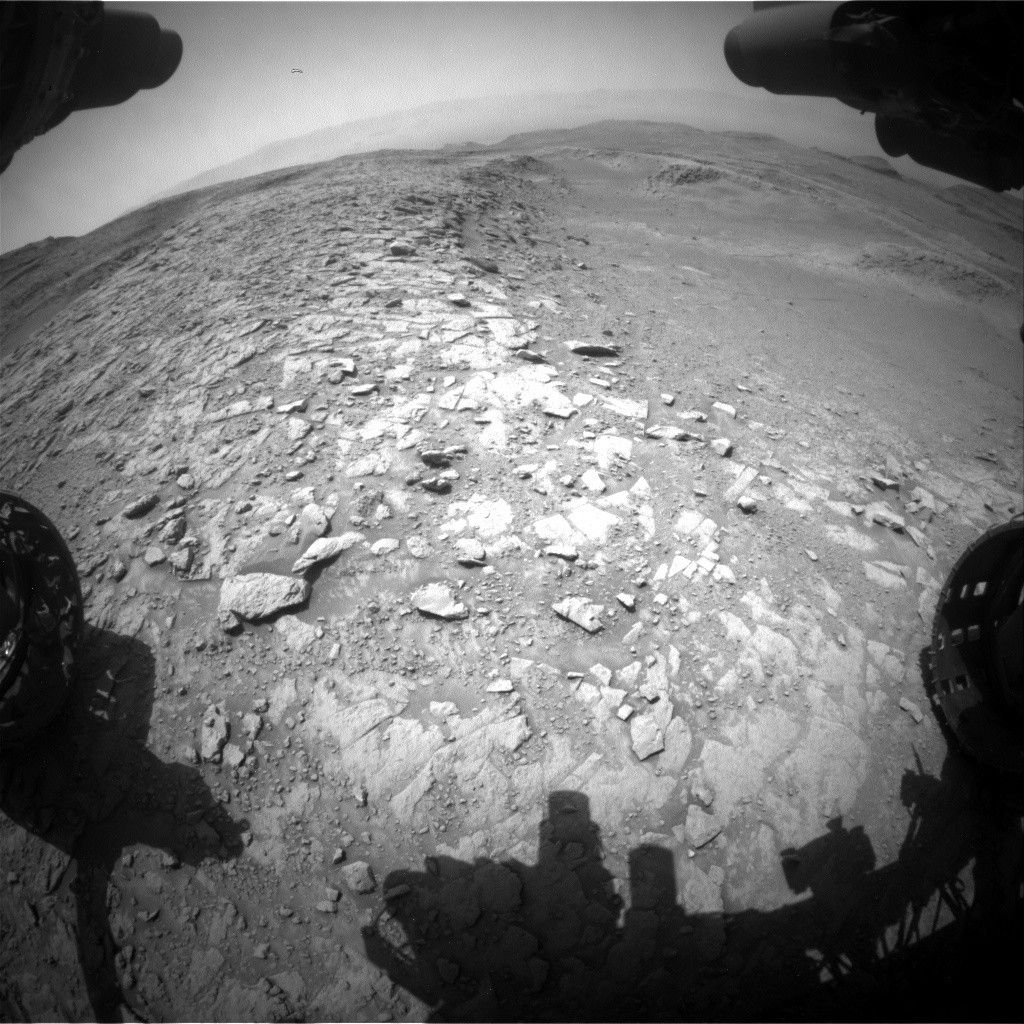Now Reading: 5 reasons why Blue Origin’s New Glenn Mars launch was a big deal
-
01
5 reasons why Blue Origin’s New Glenn Mars launch was a big deal
5 reasons why Blue Origin’s New Glenn Mars launch was a big deal

All Mars launches are big deals, but this one had some extra juice.
NASA’s ESCAPADE Mars mission lifted off atop Blue Origin’s powerful New Glenn rocket from Florida’s Space Coast on Thursday (Nov. 13), kicking off a circuitous trip to the Red Planet.
1. The first Mars launch in more than five years
Though NASA has explored the Red Planet extensively over the past few decades, launches to the fourth planet from the sun remain relatively rare. The last such liftoff occurred on July 30, 2020, when NASA’s sample-collecting Perseverance rover and Ingenuity helicopter roared into Earth’s skies atop a United Launch Alliance Atlas V rocket.
ESCAPADE (short for “Escape and Plasma Acceleration and Dynamics Explorers”) consists of two identical orbiters, which represents another first: No other Red Planet mission has sent more than one spacecraft to linger in Mars orbit. (There have been other multi-spacecraft Mars missions — NASA’s Viking 1 and Viking 2 each consisted of an orbiter and a lander, for example, and the agency’s Mars Exploration Rover effort sent two wheeled robots, Spirit and Opportunity, to the surface.)
Each ESCAPADE spacecraft carries the same four science instruments, which the probes will use to study how Mars’ magnetic environment interacts with the solar wind, the stream of charged particles flowing continuously from the sun. The mission’s data should help scientists better understand how the Red Planet lost its thick atmosphere long ago, NASA officials have said.
2. A new trajectory to the Red Planet
Earth and Mars align properly for interplanetary launches just once every 26 months, so Red Planet probes tend to fly in mini-waves. A week before Perseverance and Ingenuity took off, for example, China launched Tianwen 1, its first-ever mission to Mars (and another two-spacecraft effort, by the way).
But ESCAPADE is bucking that trend, as the next Mars launch window doesn’t open until late 2026. They’ll still hit it, in a way; the twin probes are headed to the sun-Earth Lagrange Point 2, a gravitationally stable spot about 930,000 miles (1.5 million kilometers) from our planet. They’ll linger there for a year, studying space weather, until the Mars transfer window opens. Then, they’ll journey to the Red Planet after getting a speed-boosting “gravity assist” from Earth.
This novel trajectory could pave the way for greater exploration of Mars down the road, according to mission team members.
“If humans plan to settle Mars in the future, hundreds to thousands of crewed and uncrewed ships will need to head out during every alignment,” according to an ESCAPADE explainer posted Nov. 5 by the University of California, Berkeley, whose Space Sciences Laboratory will operate the two probes for NASA.
“Since Earth has a limited number of launch pads and weather and technical delays are common, the flexible trajectory ESCAPADE will pioneer could allow all these spacecraft to launch over many months, ‘queueing up’ before zipping off to Mars during the planetary alignment,” the explainer adds.

3. Rocket Lab’s first interplanetary mission
The two ESCAPADE probes — which are named Blue and Gold, the school colors of UC-Berkeley — were built by Rocket Lab. And that’s another important milestone: The California-based company had never been part of an interplanetary mission before. (It’s not Rocket Lab’s first deep-space project of any kind, however; its Electron launcher sent NASA’s CAPSTONE mission to the moon back in June 2022.)
And ESCAPADE won’t be an interplanetary one-off for Rocket Lab, if all goes to plan. The company is working on a private mission that will hunt for signs of life in the clouds of Venus and also aims to help NASA get Perseverance’s collected samples from Mars to Earth.
4. The first operational New Glenn launch
New Glenn is the first orbital rocket developed by Blue Origin, which was founded by Amazon’s Jeff Bezos. The two-stage heavy lifter had just one flight under its belt before Thursday — a test mission that lifted off in January 2025, sending a prototype version of Blue Origin’s Blue Ring spacecraft platform to orbit.
Blue Origin has big plans for New Glenn, which stands 321 feet (98 meters) tall, can haul about 50 tons (45 metric tons) of payload to low Earth orbit and features a reusable first stage.
“The rocket is engineered with the safety and redundancy required to fly humans, and will enable our vision of building a road to space for the benefit of Earth,” the company wrote in a New Glenn description.
Proving that New Glenn can ace an operational mission, sending payloads on their desired trajectory into the final frontier, is an important step down that road.
So, Thursday was a very big day for Blue Origin. And New Glenn was up to the challenge, acing its first-ever flight to feature customer payloads.
“We are open for business, baby, on New Glenn!” Blue Origin’s Ariane Cornell said during the ESCAPADE launch webcast. “A new day, a new chapter, has just opened for, as we said, Blue Origin but also the space industry.”

5. The first New Glenn rocket landing
Each New Glenn first stage is designed to fly at least 25 times, a feature that will make the rocket more affordable and more efficient. But such extensive reuse requires a pinpoint landing after each liftoff, which we’d never seen with the rocket — until Thursday, that is.
Blue Origin tried to bring New Glenn’s first stage down on its recovery ship — nicknamed Jacklyn, after Bezos’ mom — during the rocket’s debut flight in January, but the booster crashed into the sea. The company succeeded during the ESCAPADE launch, however, joining very rarefied air: Previously, only SpaceX had managed to bring a booster down safely during an orbital launch.
SpaceX has done this more than 500 times with its Falcon 9 and Falcon Heavy rockets, so Blue Origin has some catching up to do. But it’s a very important start.
Stay Informed With the Latest & Most Important News
Previous Post
Next Post
-
 012024 in Review: Highlights from NASA in Silicon Valley
012024 in Review: Highlights from NASA in Silicon Valley -
 02Panasonic Leica Summilux DG 15mm f/1.7 ASPH review
02Panasonic Leica Summilux DG 15mm f/1.7 ASPH review -
 03How New NASA, India Earth Satellite NISAR Will See Earth
03How New NASA, India Earth Satellite NISAR Will See Earth -
 04And Thus Begins A New Year For Life On Earth
04And Thus Begins A New Year For Life On Earth -
 05Astronomy Activation Ambassadors: A New Era
05Astronomy Activation Ambassadors: A New Era -
06SpaceX launch surge helps set new global launch record in 2024
-
 07From Polymerization-Enabled Folding and Assembly to Chemical Evolution: Key Processes for Emergence of Functional Polymers in the Origin of Life
07From Polymerization-Enabled Folding and Assembly to Chemical Evolution: Key Processes for Emergence of Functional Polymers in the Origin of Life




















